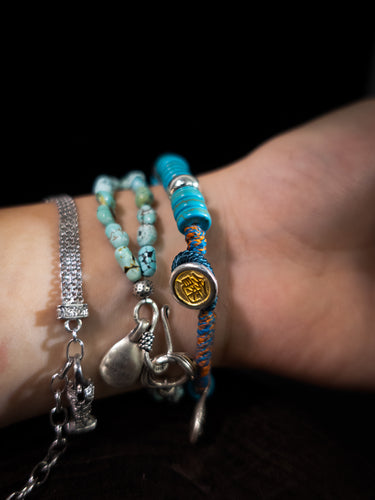
Immersing yourself in Japanese lacquerware culture is to delve into an ancient tradition that epitomizes the essence of Japanese artistry and aesthetics. Known as "Urushi" in Japan, this venerable art form is not merely a method of decorating objects but a profound cultural expression, deeply intertwined with Japan’s history, spirituality, and way of life. Japan is a country renowned for its rich cultural heritage and exquisite art forms. Among the many artistic treasures that Japan has to offer, Japanese lacquerware stands out as a true testament to the country's craftsmanship and aesthetic sensibility. The art of lacquerware has a long and storied history in Japan, dating back thousands of years. In this article, we invite you to immerse yourself in the captivating world of Japanese lacquerware and discover the beauty and intricacy of this ancient art form.
A Timeless Craftsmanship: Japanese Lacquerware
At the heart of Japanese lacquerware lies the urushi tree, whose sap serves as the foundation for this extraordinary craft. The process begins with the skilled extraction of the urushi sap, a delicate and time-honored practice that requires both expertise and reverence. The sap, transformed into a viscous lacquer, is then carefully applied in multiple layers onto a variety of materials, most commonly wood. Each layer is meticulously dried and polished, allowing the lacquer to achieve an otherworldly luster and a silky-smooth finish. The true essence of Japanese lacquerware lies not only in its technical precision but also in its profound artistic expression. The artisans, known as urushi-shi, devote years of their lives to honing their skills and mastering the craft. With unwavering dedication and a deep understanding of the materials, they breathe life into each piece, infusing it with a sense of soul and spirit. The lacquer becomes a canvas upon which their creativity unfolds, as they delicately paint intricate designs or adorn it with shimmering gold and silver accents. The beauty of Japanese lacquerware transcends the mere visual realm; it engages multiple senses, inviting a tactile and sensory experience. When one holds a lacquerware piece in their hands, they are greeted by its smooth and velvety texture, a testament to the artisan's meticulous polishing. The lacquer's natural sheen reflects light in a way that seems almost ethereal, casting a gentle glow that enhances the details of the artwork. The scent of the lacquer, subtly aromatic and reminiscent of the urushi tree, further envelops the senses, creating an immersive journey into the heart of Japanese craftsmanship. Each lacquerware piece tells a story, drawing inspiration from nature, mythology, and the rich tapestry of Japanese culture. The artisans often incorporate symbolic motifs, such as delicate cherry blossoms symbolizing the transient nature of life, majestic cranes embodying longevity and wisdom, or serene landscapes evoking a sense of tranquility. These motifs, meticulously hand-painted or carefully inlaid, serve as a visual language that transcends boundaries, speaking directly to the soul of the beholder. Japanese lacquerware extends beyond mere decorative objects; it embodies a harmonious fusion of art and functionality. From exquisite bowls and plates that elevate the dining experience to intricately crafted boxes that hold treasured keepsakes, each piece seamlessly blends form and purpose. The lacquer not only enhances the durability of the base material but also provides a waterproof and heat-resistant barrier, ensuring that these objects can withstand the test of time.
Exquisite Beauty in Japanese Lacquerware Detail
The allure of Japanese lacquerware lies not only in its visual appeal but also in its tactile and sensory experience. When one caresses the smooth surface of a lacquerware piece, they feel the essence of countless hours of painstaking work and the culmination of centuries of refinement. The layers of lacquer, carefully applied and polished, create a velvety texture that beckons to be touched. It is a sensory journey, a symphony of touch and sight that transcends the boundaries of ordinary perception. Within the intricate patterns and designs of Japanese lacquerware, one finds a world of stories waiting to be discovered. The artisans, guided by ancient traditions and their own artistic intuition, breathe life into each stroke of the brush or delicate placement of inlaid materials. They depict ethereal landscapes, where mist-shrouded mountains meet tranquil rivers, inviting the viewer to wander through a dreamscape of serene beauty. Mythical creatures come to life, their forms dancing across the surface of the lacquer, captivating the imagination and evoking a sense of wonder. The embellishments that adorn Japanese lacquerware are equally captivating. Gold and silver leaf, delicately applied, create a shimmering effect that catches the light, infusing the piece with a sense of opulence and grandeur. Mother-of-pearl, meticulously inlaid, adds a luminous quality, enhancing the depth and intricacy of the design. These embellishments are not mere decorations; they are carefully chosen elements that enhance the narrative of each piece, adding layers of meaning and symbolism. Japanese lacquerware is not simply an art form; it is a reflection of a way of life, a connection to the past, and a celebration of cultural heritage. The artisans who dedicate their lives to this craft are custodians of tradition, passing down their knowledge and skill from generation to generation. They embody the spirit of the Orient, where patience, discipline, and a profound respect for the materials are the guiding principles of artistic creation. To behold a Japanese lacquerware piece is to witness the harmony of art and nature, the culmination of centuries of refinement and mastery. It is an invitation to immerse oneself in a world where beauty is revered, craftsmanship is honored, and the ordinary is transformed into the extraordinary. Japanese lacquerware is a testament to the enduring power of art to transcend time and touch the deepest recesses of the human soul.
Symbolism and Cultural Significance of Japanese Lacquerware
The art of Urushi lacquerware is a journey that begins with the lacquer itself, a sap extracted from the Urushi tree. This sap has been used for centuries in Japan to coat and embellish a wide range of objects, from everyday utensils to sacred ceremonial artifacts. The process of applying Urushi is intricate and laborious, requiring skill and patience. Each layer of lacquer, applied thinly and evenly, must be left to dry in a humid environment, a process that allows the lacquer to cure and harden. This process is repeated numerous times, creating a depth and richness to the lacquer that is unparalleled in its luster and durability. The artistry of Japanese lacquerware is further exemplified in its decoration. Techniques such as Maki-e, where gold or silver powder is sprinkled onto wet lacquer to create intricate designs, are highly valued. These designs often draw inspiration from nature, with motifs like cherry blossoms, maple leaves, and birds, reflecting the deep connection and reverence the Japanese have for the natural world. The symbolism in these motifs is profound, often alluding to themes of beauty, impermanence, and the seasons of life. Japanese lacquerware culture is also deeply connected to the tea ceremony, a ritual that is central to Japanese culture. Lacquerware items such as tea caddies, bowls, and trays are integral to the ceremony, each piece reflecting the wabi-sabi aesthetic that values simplicity, naturalness, and a subtle grace. The glossy, refined finish of Urushi lacquerware, set against the backdrop of the minimalist tea setting, creates a sense of tranquility and contemplative beauty.
In conclusion, immersing yourself in Japanese lacquerware culture is to experience a world where art intersects with daily life, where each object tells a story of tradition, beauty, and meticulous craftsmanship. In modern times, Japanese lacquerware continues to evolve. Contemporary artists and craftsmen blend traditional techniques with modern designs, creating pieces that appeal to a global audience while retaining the essence of traditional Urushi. These artists are not only preserving an ancient art form but are also reinterpreting it, keeping it alive and relevant in the modern world. Exploring Japanese lacquerware culture also reveals its role in everyday life. In traditional Japanese homes, lacquerware is used not only for its beauty but also for its practicality. Items like bento boxes, soup bowls, and serving trays are commonplace, each a small work of art that enriches daily life. The use of lacquerware in everyday items reflects the Japanese philosophy that beauty and functionality should coexist harmoniously. It is to appreciate an art form that has stood the test of time, evolving yet retaining its core essence. Japanese lacquerware is not just a cultural artifact; it is a living tradition, a testament to the enduring beauty and depth of Japanese art and culture.





























